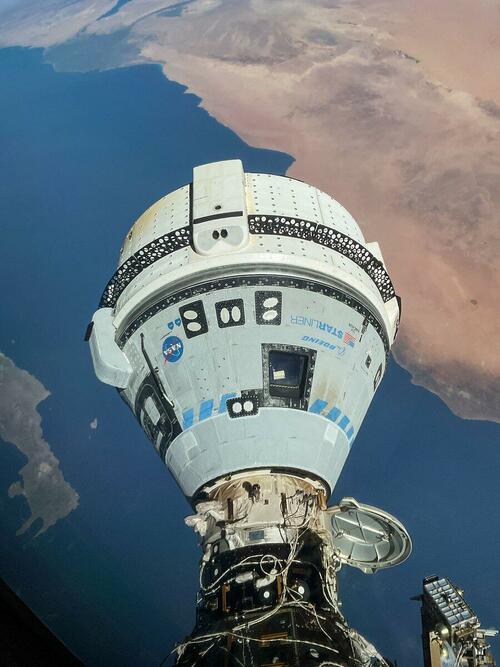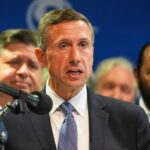
Boeing's Starliner spacecraft's return from the International Space Station to Earth will be delayed until mid-next week as NASA and astronauts troubleshoot helium leaks and try to figure out why some of the thrusters failed during the latest test flight.
At a press briefing on Tuesday, Steve Stich, NASA's commercial crew program manager, said Starliner would end its first crewed mission to the ISS no earlier than next Wednesday - or about three weeks after it first launched atop a United Launch Alliance Atlas V rocket from Cape Canaveral, Florida.
"We want to give our teams a little bit more time to look at the data, do some analysis, and make sure we're really ready to come home," Stich said.
He emphasized that during the ISS docking on June 6, five of Starliner's 28 reaction control thrusters malfunctioned but noted four managed to recover and come back online.
"We're taking our extra time given that this is a crewed vehicle, and we want to make sure that we haven't left any stone unturned," Stich said, adding, "We also want to look at the systems, and potential interaction between the systems, and make sure we haven't missed something before we return. And we're getting a lot of great data while we're at the space station for not only this flight but for the next flight."
Over the weekend, Boeing and NASA conducted a thruster hot-fire test. Stich expressed a high level of confidence in Starliner's return, stating that everyone involved in the mission 'feels very confident.'
Starliner is designed for six-month missions. The spacecraft can stay docked at the ISS for 45 days.
The latest in-flight problems follow years of challenges Boeing has faced with Starliner. These problems compound the ongoing issues with the company's commercial jet program that CEO Dave Calhoun was grilled by lawmakers on Capitol Hill on Tuesday.
Boeing’s Starliner spacecraft’s return from the International Space Station to Earth will be delayed until mid-next week as NASA and astronauts troubleshoot helium leaks and try to figure out why some of the thrusters failed during the latest test flight.
At a press briefing on Tuesday, Steve Stich, NASA’s commercial crew program manager, said Starliner would end its first crewed mission to the ISS no earlier than next Wednesday – or about three weeks after it first launched atop a United Launch Alliance Atlas V rocket from Cape Canaveral, Florida.
“We want to give our teams a little bit more time to look at the data, do some analysis, and make sure we’re really ready to come home,” Stich said.
He emphasized that during the ISS docking on June 6, five of Starliner’s 28 reaction control thrusters malfunctioned but noted four managed to recover and come back online.
“We’re taking our extra time given that this is a crewed vehicle, and we want to make sure that we haven’t left any stone unturned,” Stich said, adding, “We also want to look at the systems, and potential interaction between the systems, and make sure we haven’t missed something before we return. And we’re getting a lot of great data while we’re at the space station for not only this flight but for the next flight.”
Over the weekend, Boeing and NASA conducted a thruster hot-fire test. Stich expressed a high level of confidence in Starliner’s return, stating that everyone involved in the mission ‘feels very confident.’
Starliner is designed for six-month missions. The spacecraft can stay docked at the ISS for 45 days.
The latest in-flight problems follow years of challenges Boeing has faced with Starliner. These problems compound the ongoing issues with the company’s commercial jet program that CEO Dave Calhoun was grilled by lawmakers on Capitol Hill on Tuesday.
Loading…





